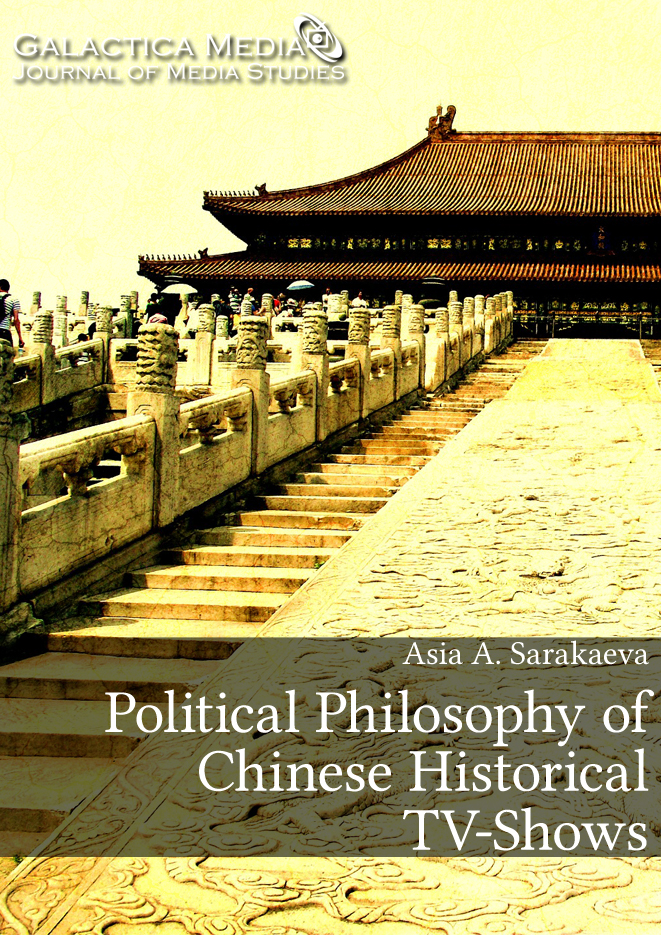Abstract
Based on the analysis of Chinese historical or quasi-historical TV-series the article studies the views of the present-day Chinese people of state, nation, human rights and a person’s duties towards the society, of the optimal methods of government and persons fit to govern, of China’s role and place in the international relations system. The author singles out statism, monarchism, paternalistic expectations, chauvinism as the ideas explicitly or latently underlying this political ideological complex. Due to the considerable growth of modern Chinese women’s economic status and independence, the author finds it necessary to pay special attention to the political worldview the historical cinematography presumes female audience to harbor or undertakes to impose upon them. The article shows that a number of political ideas have evolved from traditional to more modern forms because of the changes in the society, namely the view of female rulers has become more favorable; the idea of the civil and military officers’ role in the state government has somewhat shifted; the image of a barbarian has acquired the features of the junior, sub-dominant partner in the friendly communication. Yet the author emphasizes the general tendency of Chinese political thought to preserve its direct continuity with the traditional political philosophy of ancient China as formulated in the wake of the Common Era.
References
An Introduction to Chinese Classics: Confucianism, Taoism, Buddhism. (2014). Nanjing: Jiangsu People’s Publishing House.
Barend, J. (2017). Guan Yu: The Religious Afterlife of a Failed Hero. Oxford: Oxford University Press.
Fen, Yu-lan. (1998). A brief history of Chinese philosophy. St.Petersburg: Eurasia. (In Russian).
Luo, G.-J. (1954). The Three Kingdoms. Volume 1. Moscow: State Publishing House of fiction. (In Russian).
Qian, S. (1996). Historical Notes. Vol. 7. Moscow: Oriental Literature. (In Russian).
Sarakaeva, A.A. (2017). “Destroyer of kingdoms” and the consumer society. The image of Sishi in contemporary Chinese culture. Journal of Frontier Studies, 2(1), 65–82. (In Russian).
Yakushenkov, S. N., & Yakushenkova, O. S. (2012). The Body of the Barbarian: Constructing the Image of the Alien on the Chinese Frontier. Caspian Region: Politics, Economics, Culture, (4), 233–240. (In Russian).
南门太守 [South Gate Governor]. (2010). 南门太守。曹操秘史,第2部。[The Secret History of Cao Cao. Volume 2]北京 [Beijing]: 新世界出版社 [New World Publishing House]. (In Chinese).
吴晗 [Wu Han]. (2020). 吴晗。明朝锦衣卫东西厂。[Brocade-clad retinue, the Eastern Palace and the Western Palace under the Ming Dynasty]. 北京 [Beijing]: 华文出版设 [Huawen Publishing House]. (In Chinese).
黄团元 [Huang, T. (2015). 黄团元。刘邦用人 [How Liu Bang used people]. 湖北 [Hubei]: 湖北人民出版社 [Hubei People's Publishing House]. (In Chinese).

This work is licensed under a Creative Commons Attribution 4.0 International License.

